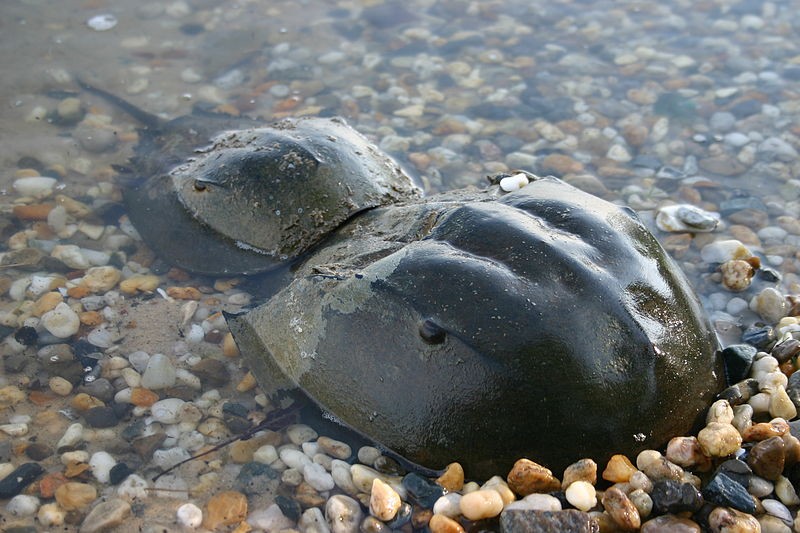Horseshoe crabs, despite their name, are merely comparable to other crabs in appearance, albeit they do have carapaces like other crabs. They are most closely linked to arachnids genetically.
They do, however, resemble other crustaceans in that they have five pairs of legs beneath the hard shell for walking and swimming, six pairs of gills, and a tail that is as long as their body.
Horseshoe crab is this crab's blue blood worth $60,000 a gallon?

Horseshoe Crab's Blue Blood
One of the most essential, undiscovered, and frequently utilized materials in the ocean is the horseshoe crab's blue blood. It is eaten in some regions of Asia, but most people collect crabs for their valuable blue blood, which can fetch up to $60,000 per gallon in some locations.
Why is this blood so pricey for such a tiny amount? The pharmaceutical sector uses the horseshoe crab to detect microorganisms on new gadgets like pacemakers and vaccinations.
The crab's blood contains amebocytes, which protect the crabs from disease-causing microbes; it's also susceptible to bacterial toxins, which is why it's used to manufacture Limulus Amoebocyte Lysate (LAL), a chemical used to identify contaminants in the medical business.
Also Read: Octopus Farming Raises Ethical Concerns: Do These Clever Cephalopods Have Emotions?
Million-Year-Old Crab

The crab, which has been alive for over 450 million years and is frequently referred to as a living fossil, is farmed for amoebocytes. Because the medical profession has grown to rely so much on LAL, hundreds of thousands of them are milked of their copper-laden blood every year.
They are gathered from beaches, many of which are along the Atlantic Ocean's coast in the United States, then returned to beaches far away from where they were obtained to avoid inadvertent re-collection. Unfortunately, between 10 and 30 percent of the organisms die during and after the bleeding process, and of those who do, females are far less inclined to mate after that.
Alternatives?
As a result of this, as well as agricultural and environmental variables that are all harming the crab's survival rates, a lot of specialists are predicting that this little species, which has survived dinosaurs, tragedies, and ice ages, may be wiped out one day.
An alternative, a lab-grown testing kit called Factor C, works the same way as LAL; however, due to the cautious pharmaceutical industry and glacial regulatory developments, Factor C was only utilized to test medicine for final approval in 2016.
LAL, not rabbits, finally supplanted them in medical testing, and it would be a tragedy to see the crabs become extinct when a lab-grown substitute is available.
Lab-Grown Substitute
Over the last two decades, the notion of lab-grown meat, also known as cultured, cultivated, cell-based, or clean meat, has arisen. Silicon Valley start-ups are rushing to get lab-grown meat on the market, even if it isn't nearly ready for customers.
And the stakes are tremendous. Thanks to lab-grown meat, millions of animals might be saved from suffering and cruel deaths on industrial farms.
Every year, 70 billion terrestrial animals and maybe billions of marine species are slaughtered for human consumption. The bulk of these animals is produced on factory farms, where they are subjected to cruel treatment and are kept in filthy circumstances for their entire lives.
Major meat producers frequently defend factory farming as the most effective way to supply global meat demand. However, data indicates that these facilities harm the environment, surrounding communities, consumer health, and animal welfare.
Related Article: Deadly Crustaceans: Xanthidaes Among the Most Poisonous Crabs in the World
For more animal news, don't forget to follow Nature World News!
© 2024 NatureWorldNews.com All rights reserved. Do not reproduce without permission.





